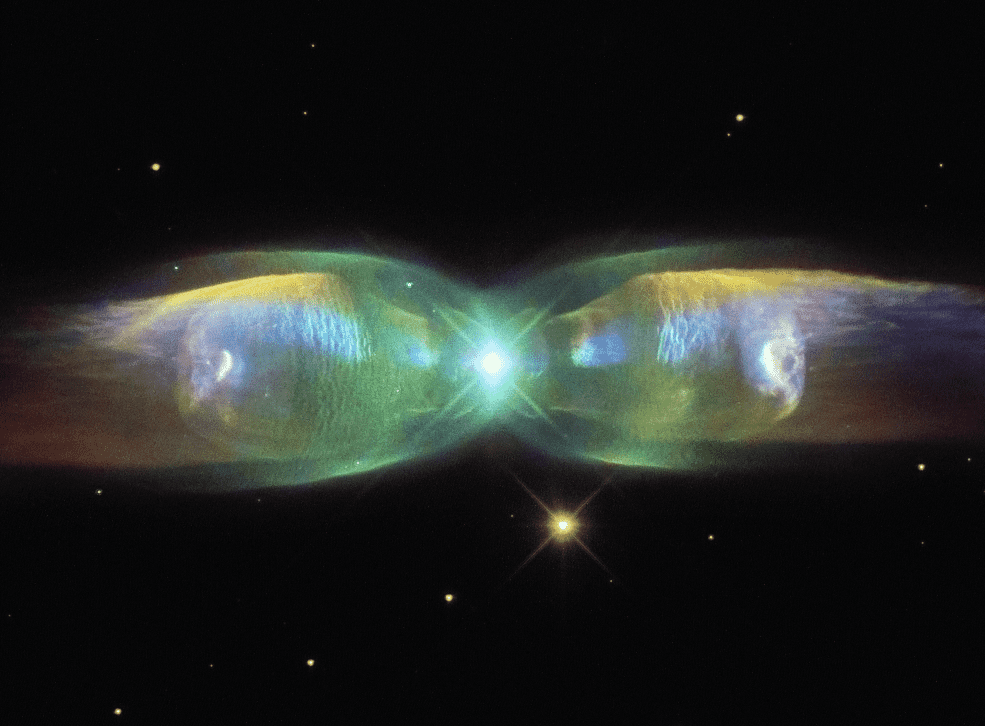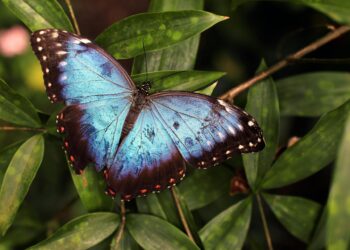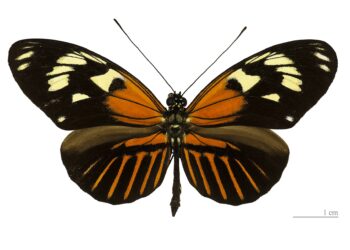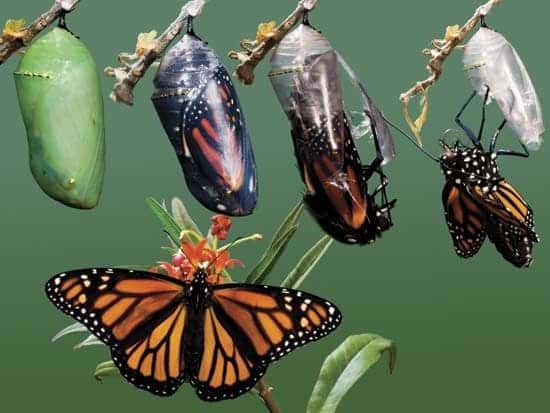Hubble has recently captured a dazzling image of a “cosmic butterfly” – the planetary nebula (PN) M2-9. The star has not only ejected its outer layers, but exposed its inner core, which is now illuminating the layers in a spectacular and violent display.

The M in this name refers to Rudolph Minkowski, the German-American astronomer who discovered this particular nebula in 1947. “Planetary nebula” is technically a misnomer, because the term denotes an expanding glowing shell of ionized gas ejected from an old red giant star (or several). Just 20% of all observed nebulas are spherically symmetric, and a wide variety of shapes exist with some very complex forms seen; this particular one is bipolar – it involves two stars.
The two stars are about the same mass and size as the Sun, ranging from 0.6 to 1.0 solar masses for the smaller star, and from 1.0 to 1.4 solar masses for the other one. The larger star has ejected most of its outer material, while the smaller one has already ejected everything and has evolved into a white dwarf – a stellar remnant composed mostly of very dense electron-degenerate matter. The “wings” are still growing, and it’s estimated that this nebular ejection started about 1,200 years ago – extremely recent in astronomical terms.
Astronomers still aren’t sure if bipolar nebulas emerge from bipolar star systems, or if the two stars somehow got tangled together afterwards. The two seem to circle themselves every 100 years (approximately), and their rotation creates the butterfly wings – actually, very violent jets stripped by the white star from its companion. Recently, the nebula has inflated dramatically due to a fast stellar wind which blew out the surrounding disk and inflated the large, hourglass-shaped wings perpendicular to the disk.






